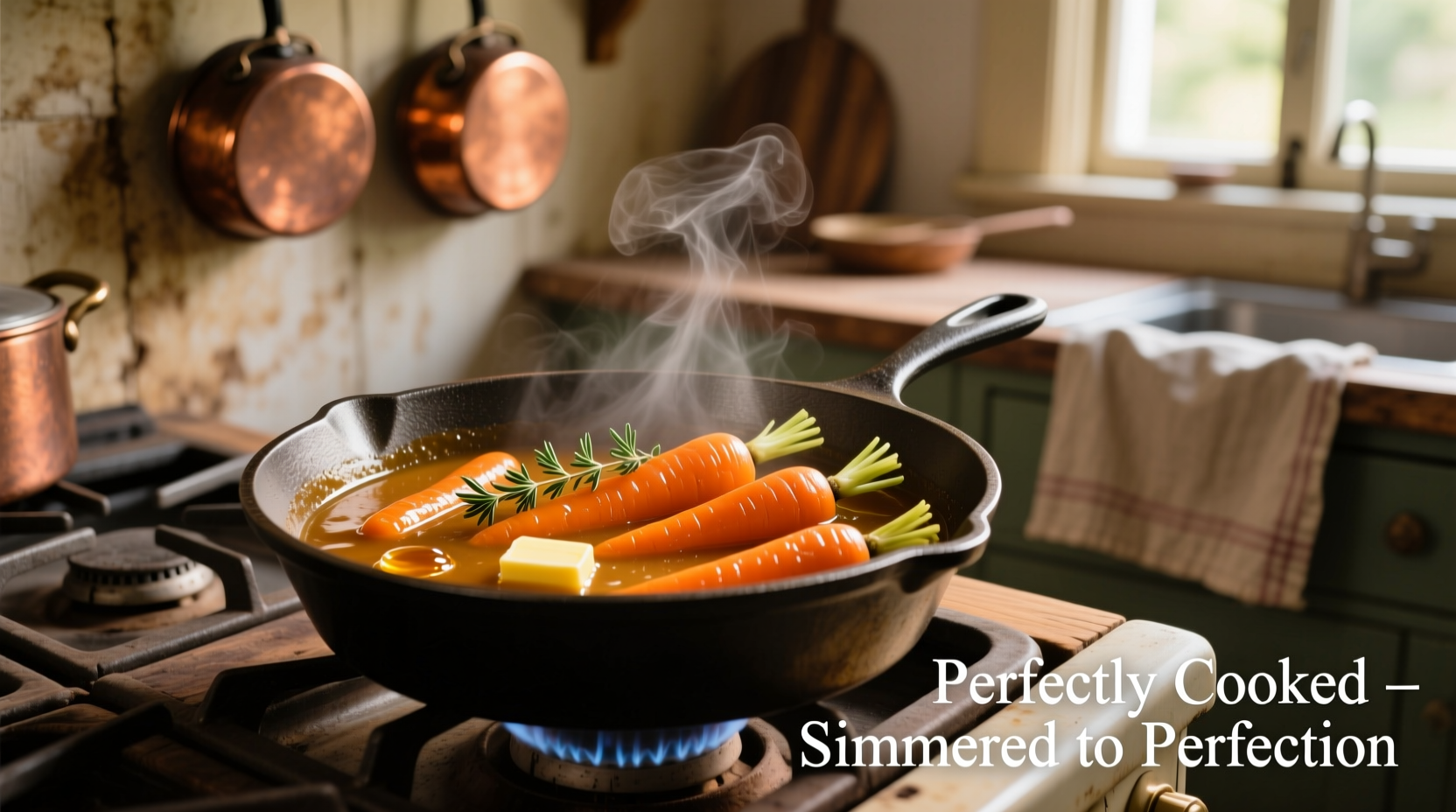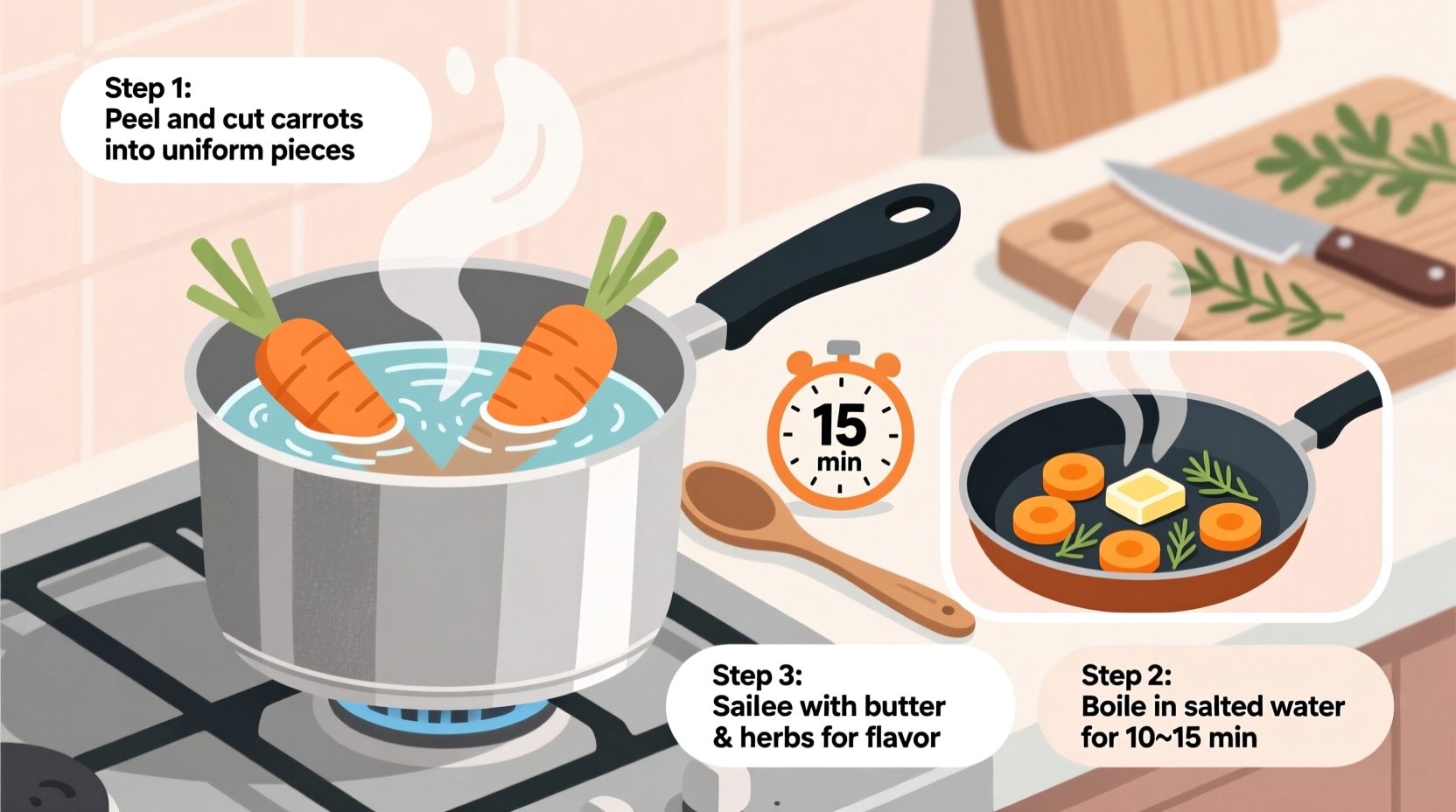To cook carrots on the stove, peel and slice 1 pound of carrots into even pieces, bring 2 cups of water or broth to a boil in a saucepan, add the carrots, reduce heat to medium, cover and simmer for 10-15 minutes until tender when pierced with a fork, then drain any remaining liquid.
Why Stovetop Carrots Outperform Other Methods
While microwaving offers speed and roasting delivers caramelization, stove-top cooking provides the ideal balance for perfect carrot texture and nutrient retention. According to USDA FoodData Central research, boiling carrots actually increases their beta-carotene availability by 34% compared to raw carrots, making this humble cooking method surprisingly effective for nutrient absorption. The controlled heat environment of your stove allows precise timing—critical since carrots can go from perfectly tender to mushy in just 2-3 minutes.
Essential Tools You Already Own
You don't need specialty equipment for perfect stove-top carrots. A standard 2-3 quart saucepan with a tight-fitting lid creates the ideal steam environment. For consistent results, use a chef's knife and cutting board to create uniform ¼-inch thick slices—this ensures even cooking. A simple fork serves as your perfect doneness tester. Professional chefs at the Culinary Institute of America emphasize that uniformity in carrot size matters more than fancy tools for this basic technique.
| Cooking Method | Time Required | Nutrient Retention | Texture Result |
|---|---|---|---|
| Stovetop Simmering | 10-15 minutes | High (beta-carotene increases) | Tender-crisp, uniform |
| Boiling | 8-12 minutes | Moderate (water-soluble vitamins leach) | Softer, potentially uneven |
| Steaming | 12-18 minutes | Very High | Firmer, slightly drier |
| Sautéing | 6-10 minutes | Moderate-High | Crisp exterior, tender interior |
Step-by-Step: Perfect Stove-Top Carrots Every Time
Preparation Phase (3 minutes)
Start with 1 pound of fresh carrots. Rinse thoroughly under cold water, then peel using a vegetable peeler. Cut both ends off, then slice into uniform ¼-inch thick rounds or 2-inch long sticks. Uniformity is critical—varying sizes lead to uneven cooking. For baby carrots, simply trim ends and leave whole. Never skip the peeling step unless using certified organic carrots, as conventional carrots often have pesticide residues in their skin according to USDA Pesticide Data Program reports.
Cooking Process (12 minutes)
Place carrots in a saucepan and add enough water or broth to come halfway up the sides of the carrots (about 1½-2 cups for 1 pound of carrots). Add ½ teaspoon salt—this isn't just for flavor; it actually helps maintain texture by strengthening pectin. Bring to a boil over high heat, then immediately reduce to medium-low, cover, and simmer. Check tenderness at 10 minutes by piercing with a fork. Properly cooked carrots should offer slight resistance but not be crunchy. Overcooking destroys texture and valuable nutrients.

Finishing Touches (2 minutes)
Once tender, immediately drain any remaining liquid. Return carrots to the warm pot (off heat) and add your finishing touch: 1 tablespoon butter or 2 teaspoons olive oil, plus optional seasonings. For classic preparation, try fresh parsley and black pepper. For enhanced flavor, consider these chef-recommended variations:
- Herb-Infused: Add 2 sprigs fresh thyme or rosemary during cooking
- Sweet-Savory: Stir in 1 teaspoon honey and ½ teaspoon cinnamon after cooking
- Garlic Butter: Sauté 1 minced garlic clove in the butter before adding to carrots
- Asian-Inspired: Toss with 1 teaspoon sesame oil and ½ teaspoon rice vinegar
Avoid These 3 Common Mistakes
Even experienced home cooks make these errors when preparing stove-top carrots:
- Overcrowding the pot: Too many carrots in one pot lowers the temperature and creates uneven cooking. Cook in batches if necessary.
- Skipping the salt: Salt isn't just for flavor—it affects texture by strengthening pectin. Use at least ½ teaspoon per pound of carrots.
- Not testing early enough: Carrots cook quickly. Start checking at 8 minutes for small pieces, 10 minutes for standard cuts.
Historical Evolution of Carrot Cooking Techniques
Carrots weren't always the orange vegetables we know today. Originally purple and white, orange carrots became popular in the 16th century. Early cooking methods focused on boiling—the only reliable stove-top technique before modern temperature control. According to food historian records from the Oxford Symposium on Food and Cookery, 18th century European cooks discovered that partially submerging carrots in liquid (rather than full boiling) preserved more nutrients and created better texture. This technique evolved into today's simmering method, which food scientists at Cornell University have confirmed optimizes both nutrient retention and texture.
Storing and Reheating Leftovers Properly
Store cooked carrots in an airtight container in the refrigerator for up to 4 days. For best results when reheating, add 1-2 tablespoons of water and cover while microwaving at 50% power for 1-2 minutes. This reintroduces moisture lost during storage. Freezing is not recommended as carrots become mushy upon thawing due to their high water content. For meal prep, consider cooking carrots al dente (slightly underdone) if you plan to reheat them later.
Perfect Pairings for Your Stove-Top Carrots
These simple carrots complement numerous dishes:
- Proteins: Roasted chicken, baked salmon, or pan-seared pork chops
- Grains: Quinoa pilaf, wild rice, or couscous
- Other Vegetables: Green beans, roasted Brussels sprouts, or sautéed spinach
- Sauces: Lemon-dill sauce, brown butter, or a light vinaigrette











 浙公网安备
33010002000092号
浙公网安备
33010002000092号 浙B2-20120091-4
浙B2-20120091-4